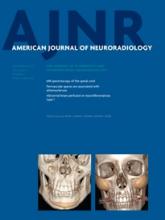Performing neuroimaging in the setting of a clinical trial, across multiple sites, is challenging because it involves standardizing acquisition and processing imaging protocols on multiple types of scanners by using multiple different platforms. The challenge is even more pronounced for cutting-edge imaging techniques such as arterial spin-labeling or diffusion tensor imaging. Mechanisms are therefore needed to translate and test advanced imaging methods across centers, to encourage the use of advanced imaging in acute settings, to stimulate closer academic-industry collaborations, and to promote the retrospective and prospective collection and pooling of imaging data while keeping in mind practical considerations such as clinical feasibility.
This daunting task has been tackled by the Stroke Imaging Research (STIR) group, a consortium of neuroradiologists, neurologists, imaging scientists, and emergency physicians with an interest in stroke imaging. STIR had a series of meetings in 2012 and 2013, where heated debates led to consensus recommendations as part of a stroke imaging research roadmap. This roadmap was published in Stroke1 and should be read by all radiologists interested in stroke research because it contains some very important recommendations in terms of standardization of image acquisition and processing for stroke and how imaging should be incorporated in stroke clinical trials. To view the paper use the link in this issue's table of contents, or go directly to: http://stroke.ahajournals.org/lookup/doi/10.1161/STROKEAHA.113.002015.
STIR proposes a specific, standardized terminology for acute stroke imaging, aligned with the National Institute of Neurological Disorders and Stroke Common Data Elements,2 including a modified TICI scale to assess reperfusion on cerebral conventional angiography. STIR also introduces the concept of “Treatment-Relevant Acute Imaging Targets” (TRAIT), which is meant to capture imaging elements needed for inclusion (or exclusion) into specific treatment protocols. TRAIT acts as a shorthand term to describe the collection of specific imaging metrics used in protocols and simultaneously reminds trial designers to ensure that imaging is directed to the key anatomic or physiologic targets of their specific intervention.
STIR proposes the establishment of a calibration process for measuring ischemic core and penumbral software, as well as the population of the STIR clinical and imaging data repository to facilitate this calibration process. STIR recognizes that imaging techniques continuously evolve and that there will always be a newer, better ischemic core or penumbral imaging technique or processing software. Therefore, it is desirable to find a balance between continued attempts to improve on existing methods versus determining whether existing methods are good enough to be used in current clinical trials. At this time, STIR does not assess or recommend how to use ischemic core and penumbral information for prognosis, prediction of response to treatment, and/or selection of patients for reperfusion therapy. These are better answered in well-designed clinical trials or prospective validation studies.
Finally, STIR recommends the creation of a stroke neuroimaging network involving a collaboration between sites to promote scientific collaboration and education in a distributed fashion and further advance imaging protocols and software reuse, and data and model sharing. As a first step towards the creation of this network, STIR is conducting an international survey for which we need your help. Please take 15 minutes to fill out the survey, which can be found at https://www.surveymonkey.com/s/DQRDYB2. Thank you in advance for your collaboration!
- © 2013 by American Journal of Neuroradiology












